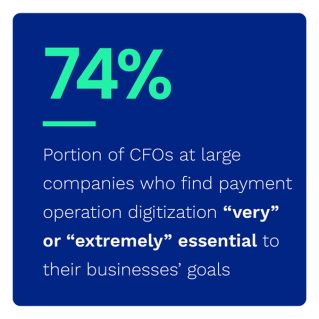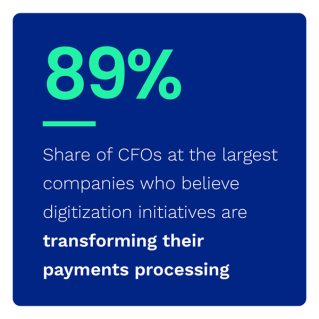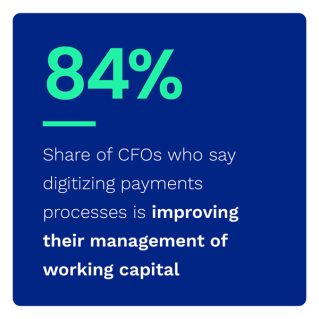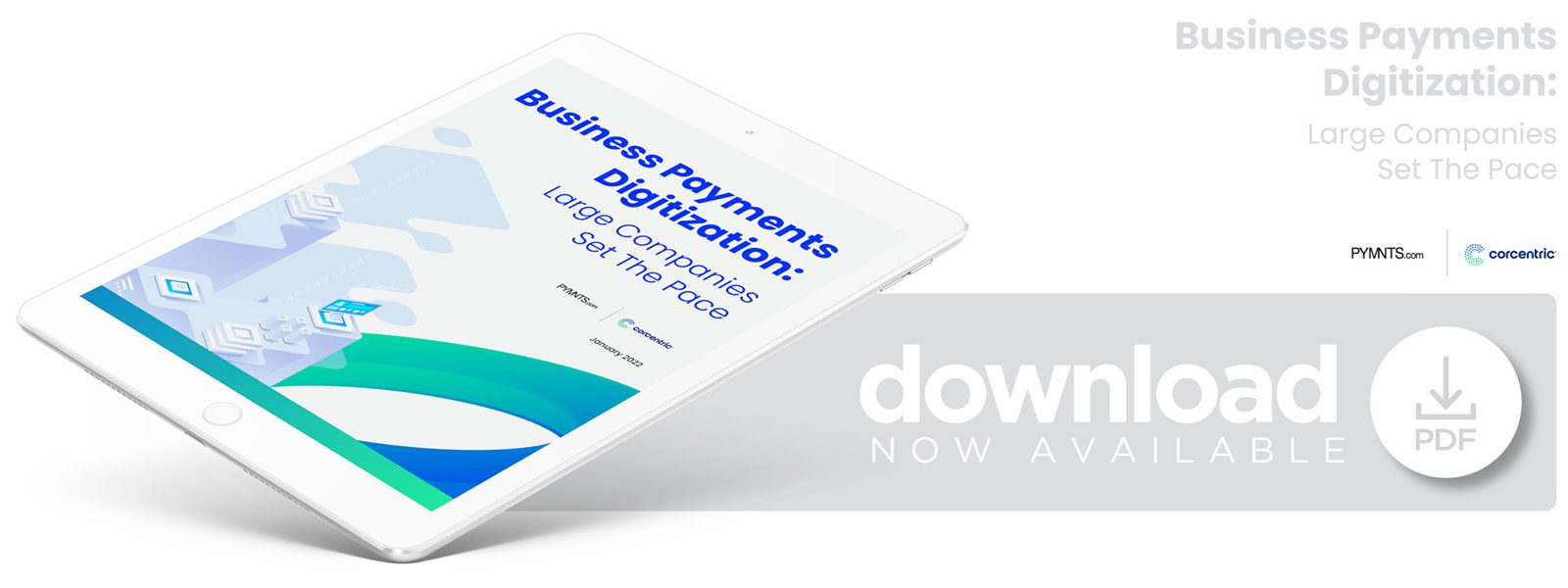Report: What Smaller Businesses Can Learn From Enterprise CFOs About Digital Payments

During the two years of disruption prompted by the pandemic, businesses of all sizes looked at the economic landscape and considered how they should respond to the extraordinary period of uncertainty. Many companies used the pandemic as a catalyst for digitizing their payments operations, and large businesses were the most aggressive with these plans.
Now, businesses of all sizes are undertaking, or planning to initiate, this transformation.  Their digitization programs are helping them become more efficient, improve collaboration with other organizations inside the company and strengthen their external ties with customers and suppliers.
Their digitization programs are helping them become more efficient, improve collaboration with other organizations inside the company and strengthen their external ties with customers and suppliers.
These are among the key findings from Business Payments Digitization: Large Companies Set The Pace, a collaboration between PYMNTS and Corcentric. The report is based on a survey of 400 chief financial officers (CFOs) who represent United States companies from five industries: manufacturing, finance, retail, transportation and healthcare. The survey was conducted from Aug. 16, 2021, through Sept. 15, 2021 and examines their plans for digitizing their payments operations.
The companies garner between $400 million and $2 billion in annual revenues and were divided into four categories: largest ($1.5 billion to $2 billion in annual revenues), mid-sized ($1 billion to $1.5 billion in annual revenues), small ($750 million to $1 billion in annual revenues) and smallest ($400 million to $750 million in annual revenues).
More key findings from the report include:
Seventy-four percent of CFOs at the largest companies say the digitization of their payment operations is “very” or “extremely” essential to achieving their business goals. The CFOs believe digitization will help them improve their ties to their sources of working capital, bolster their ability to reduce fraud and strengthen their  ability to manage the balance sheet in the current market.
ability to manage the balance sheet in the current market.
Eighty-nine percent of the CFOs at the largest companies believe their digitization initiatives are transforming their payments processing, which is far greater than the 62% average for all companies. The companies that stress the transformational aspect of payments process digitization want to use the improved efficiency it provides to support new strategic initiatives.
Ninety-one percent of CFOs say digitizing their payments processes helped their companies become more efficient. Companies across the revenue spectrum also received other gains from digitization. For example, 84% of companies say digitization improved their management of working capital, 62% say it helped reduce costs and 61% say their data security improved. The share of CFOs who held these views was consistent among all business sizes.
The decision to digitize payments processes during the past two years has positioned many companies to profit from the pandemic-influenced economy. This expectation is based on the premise that as companies digitize their payments operations and make them more efficient, they will also improve their management of the balance sheet. Companies that have established digital payments infrastructures inside their finance departments are best prepared to deliver what they need to succeed in the post-pandemic era.
To learn more about companies’ plans for digitizing their payments processes, download the report.
